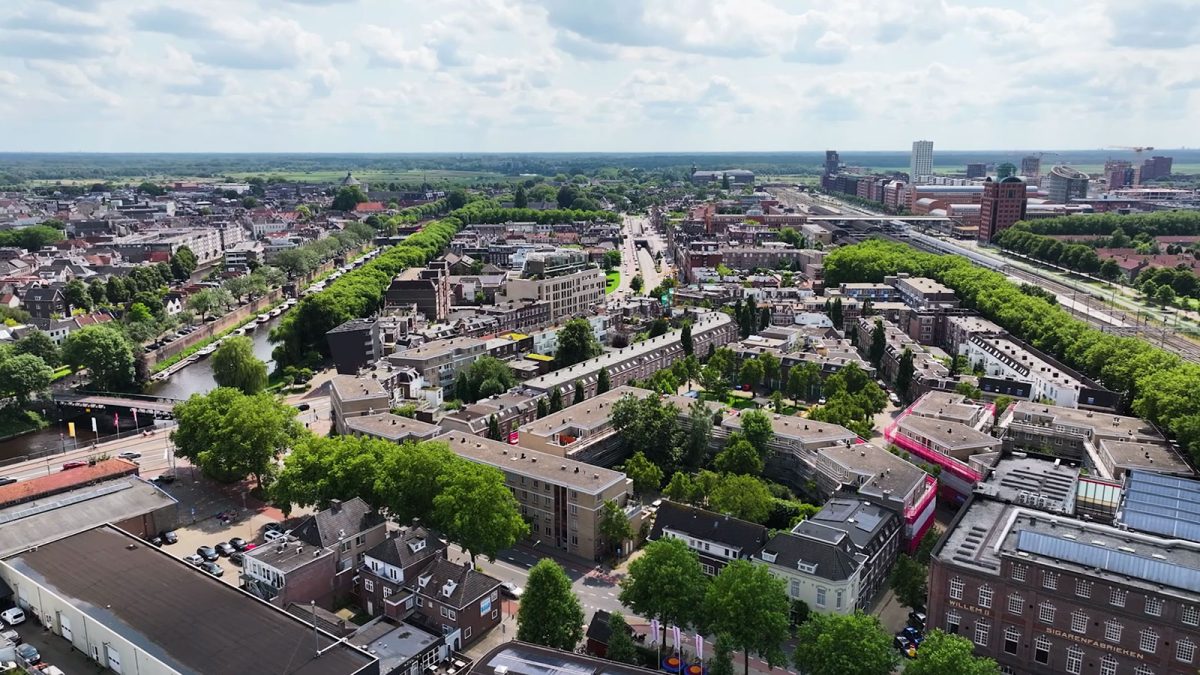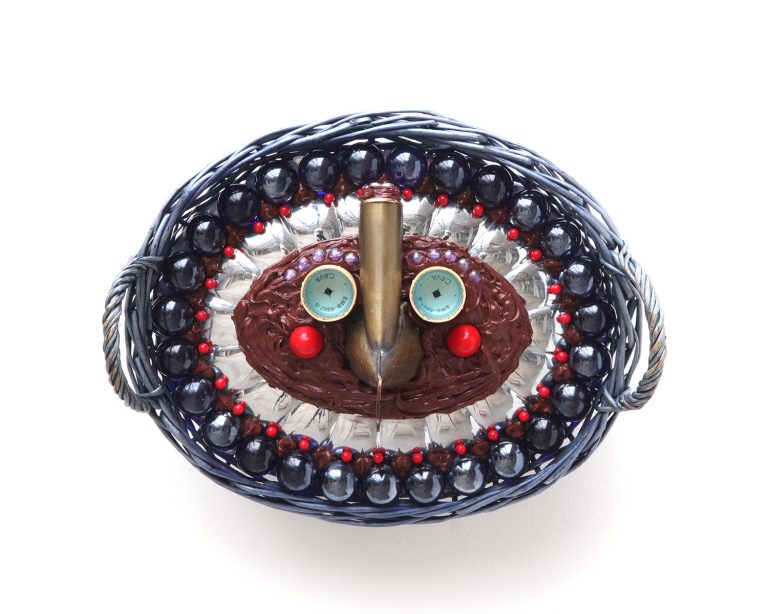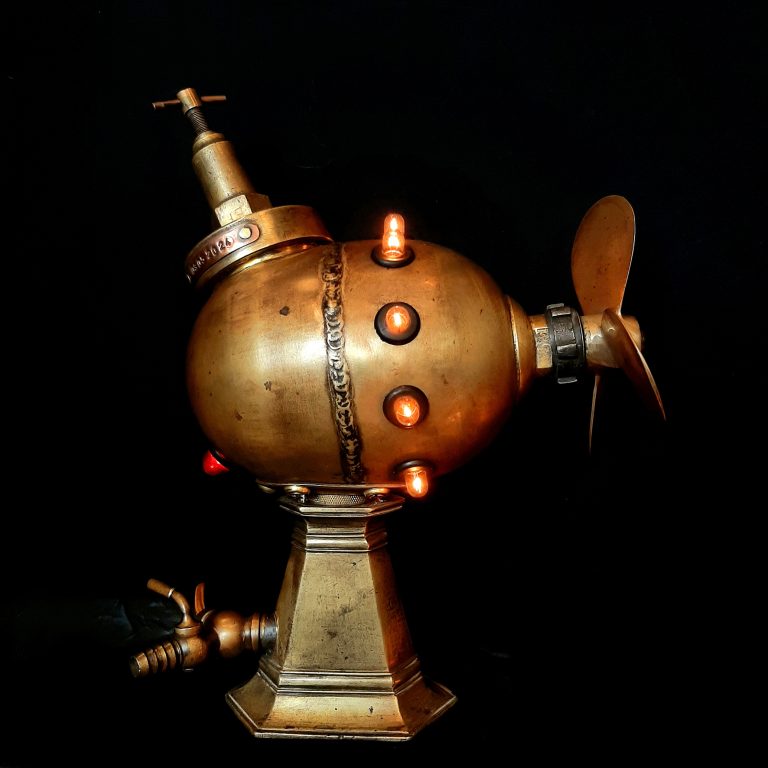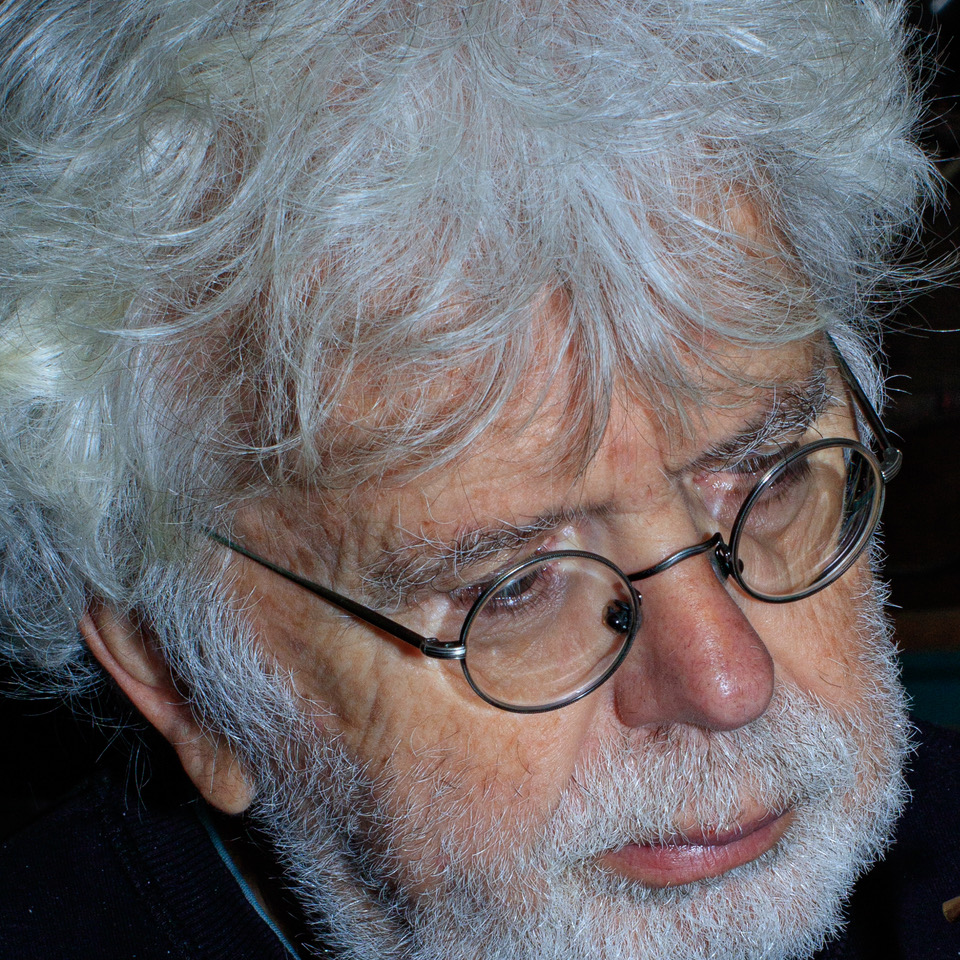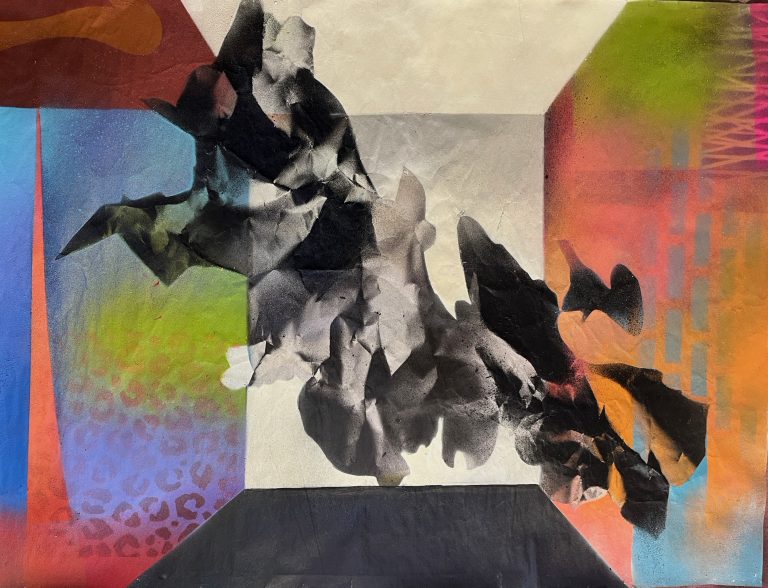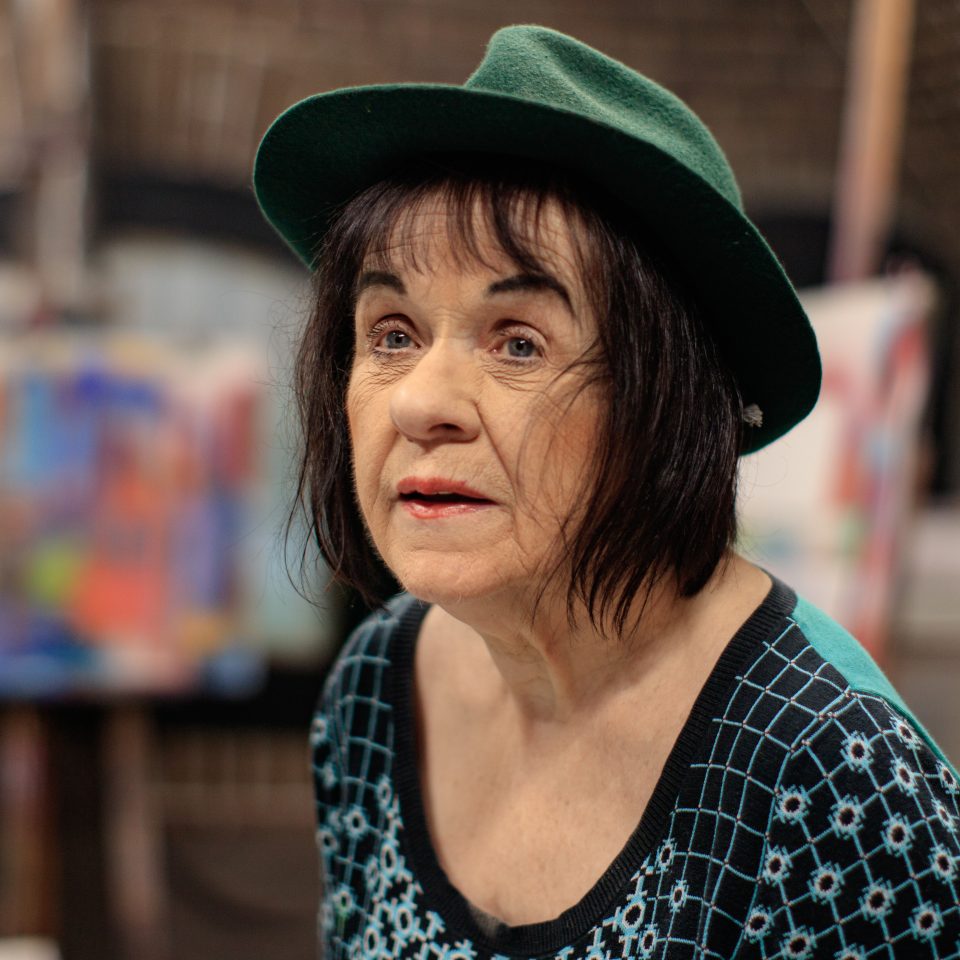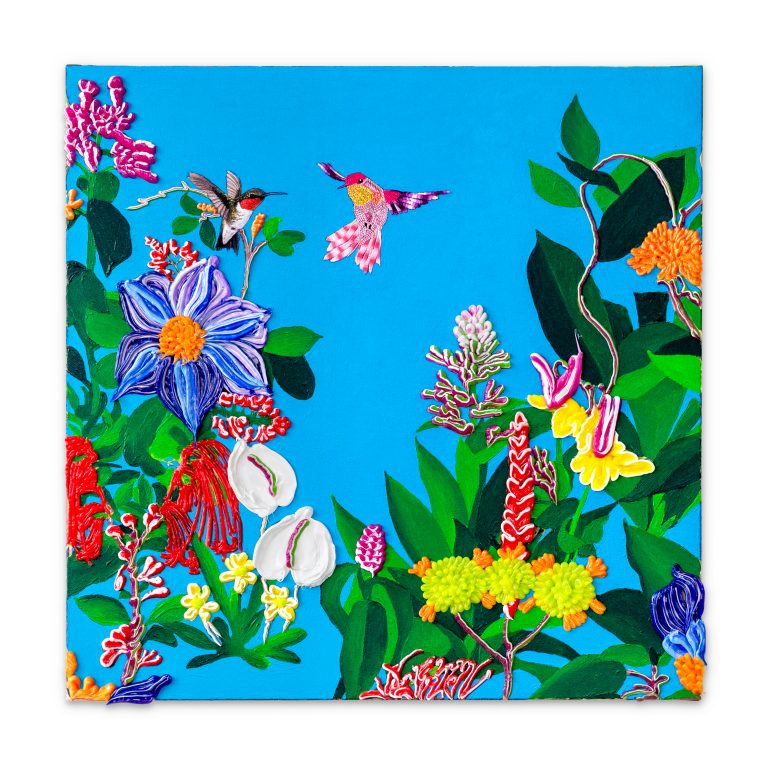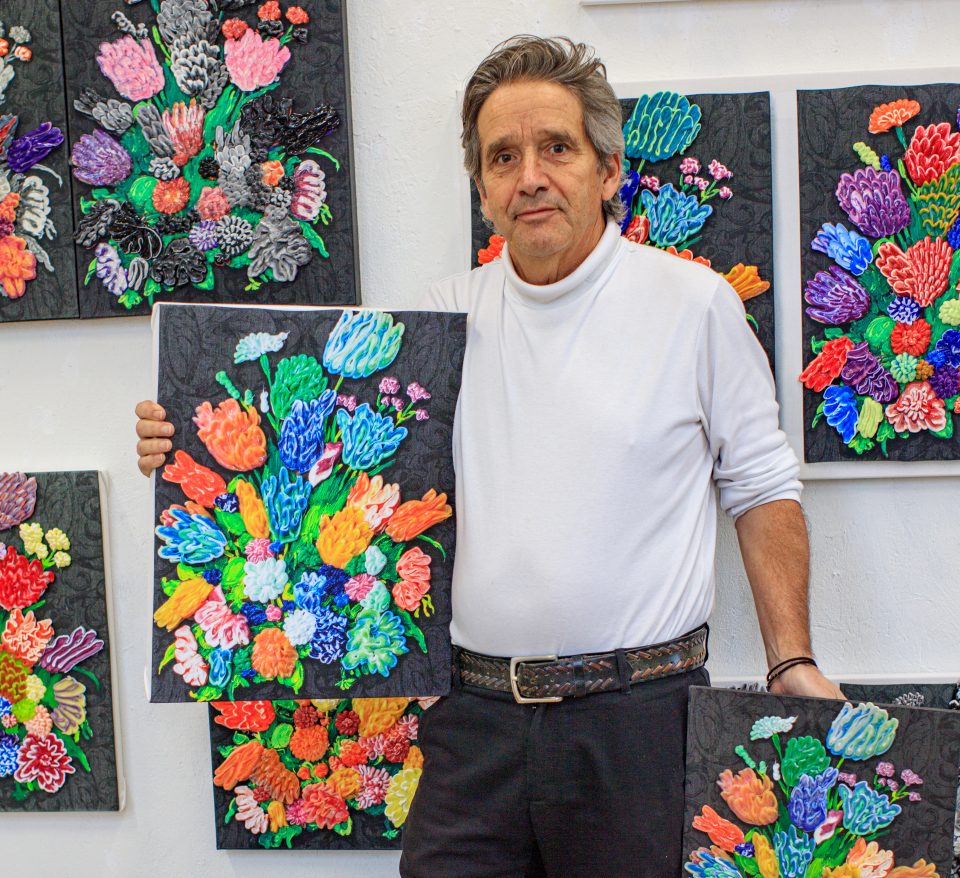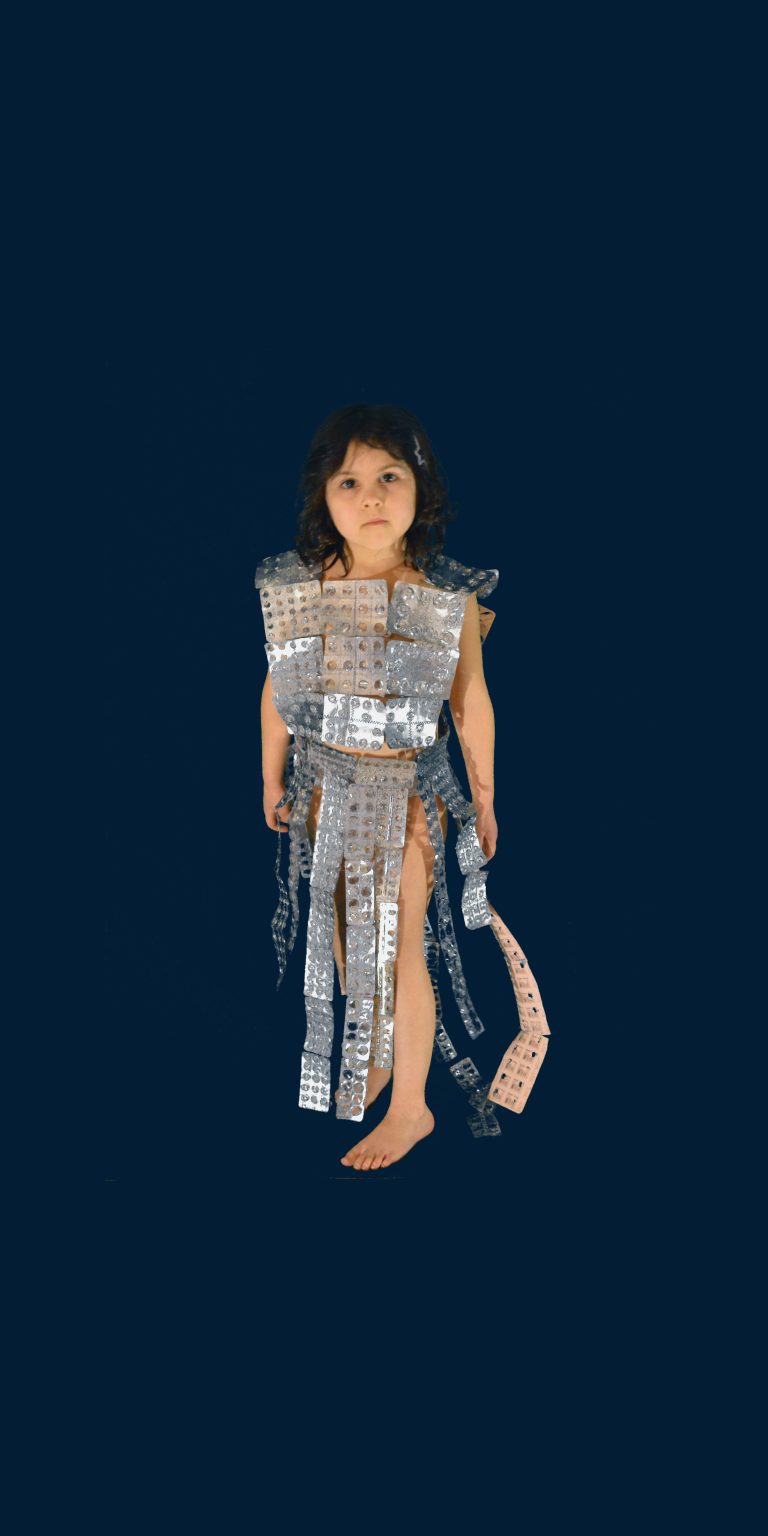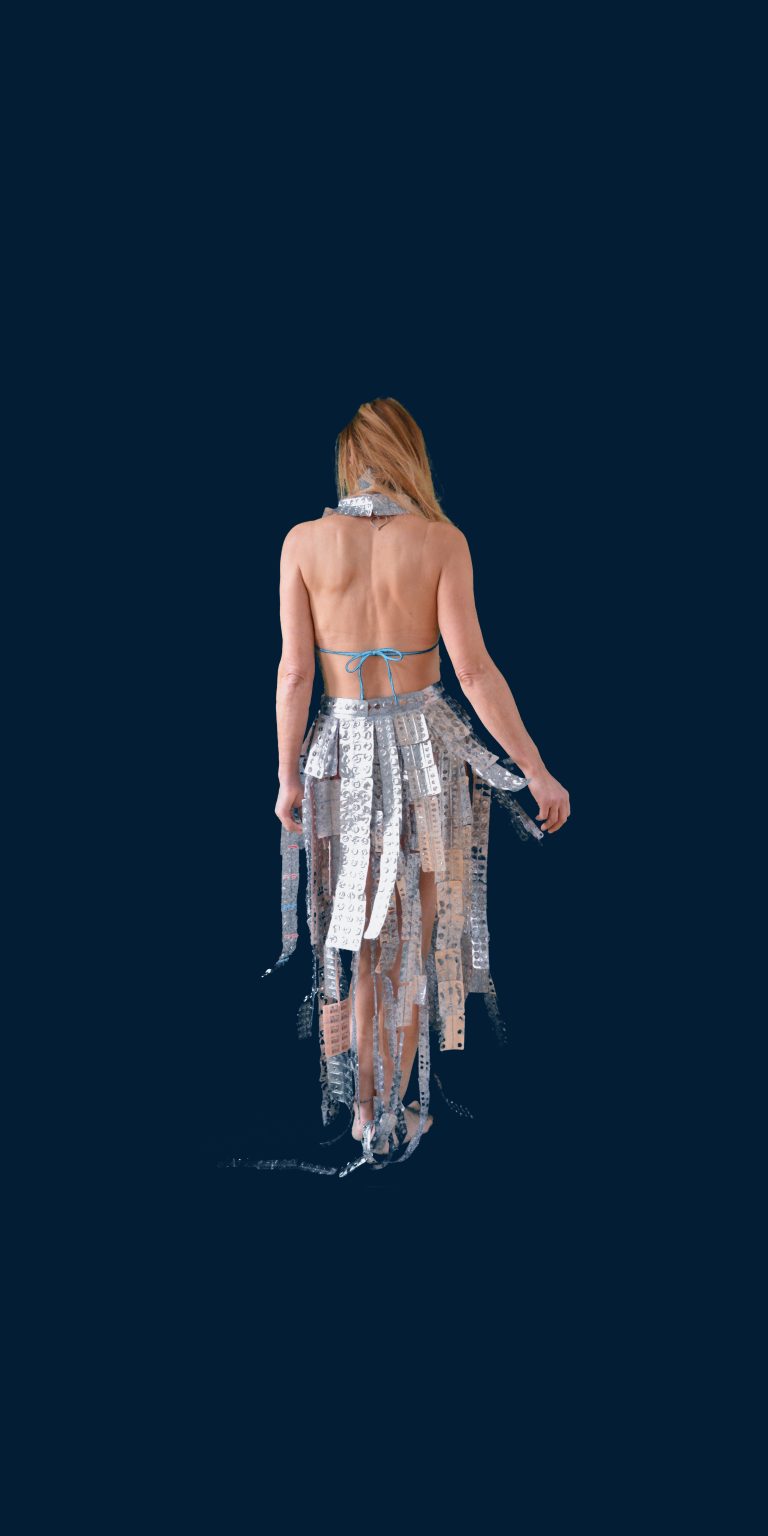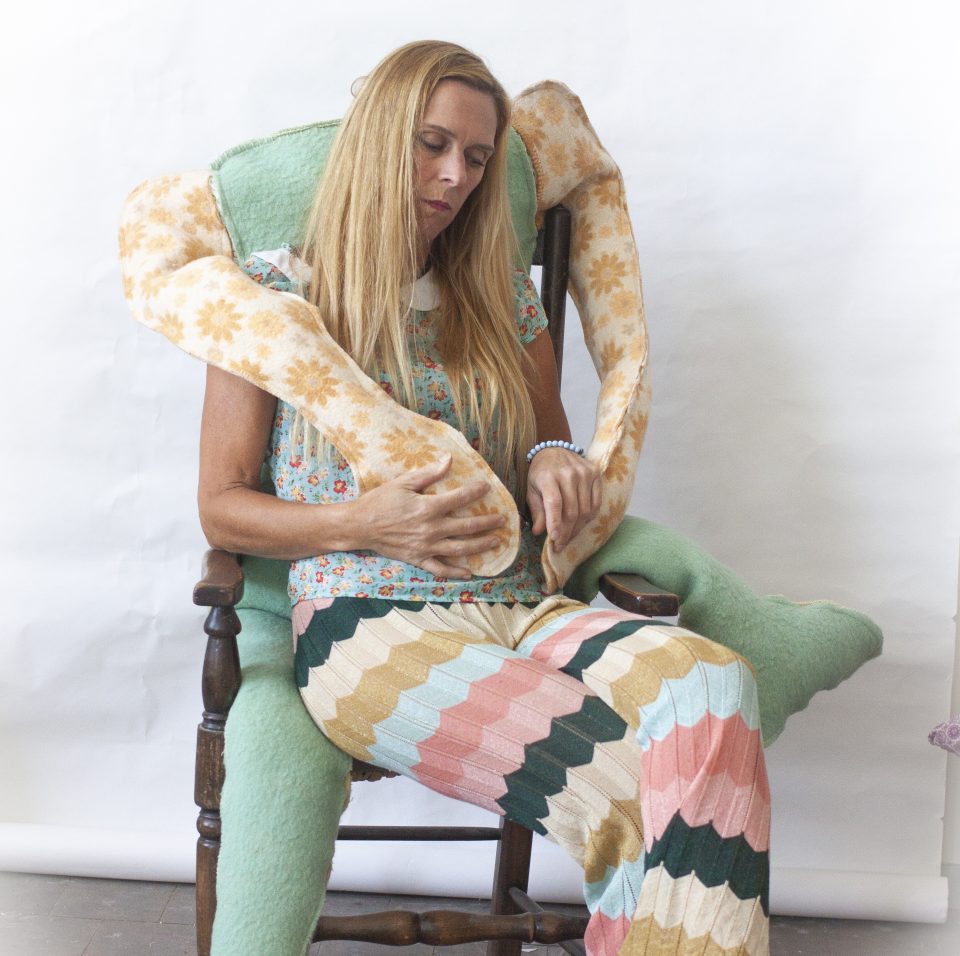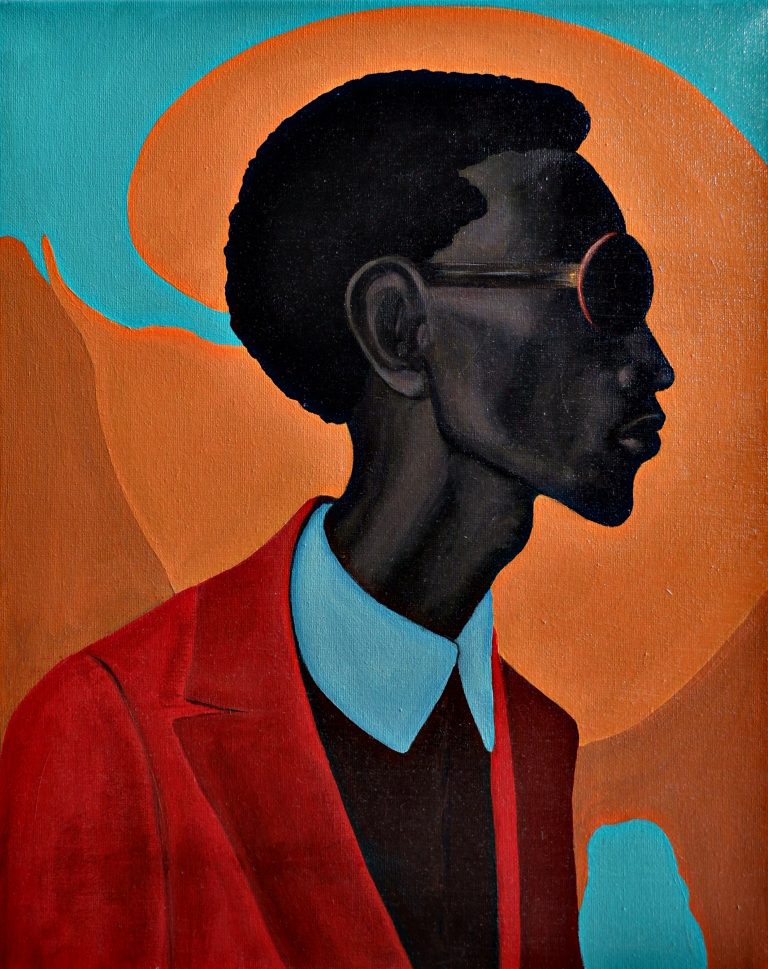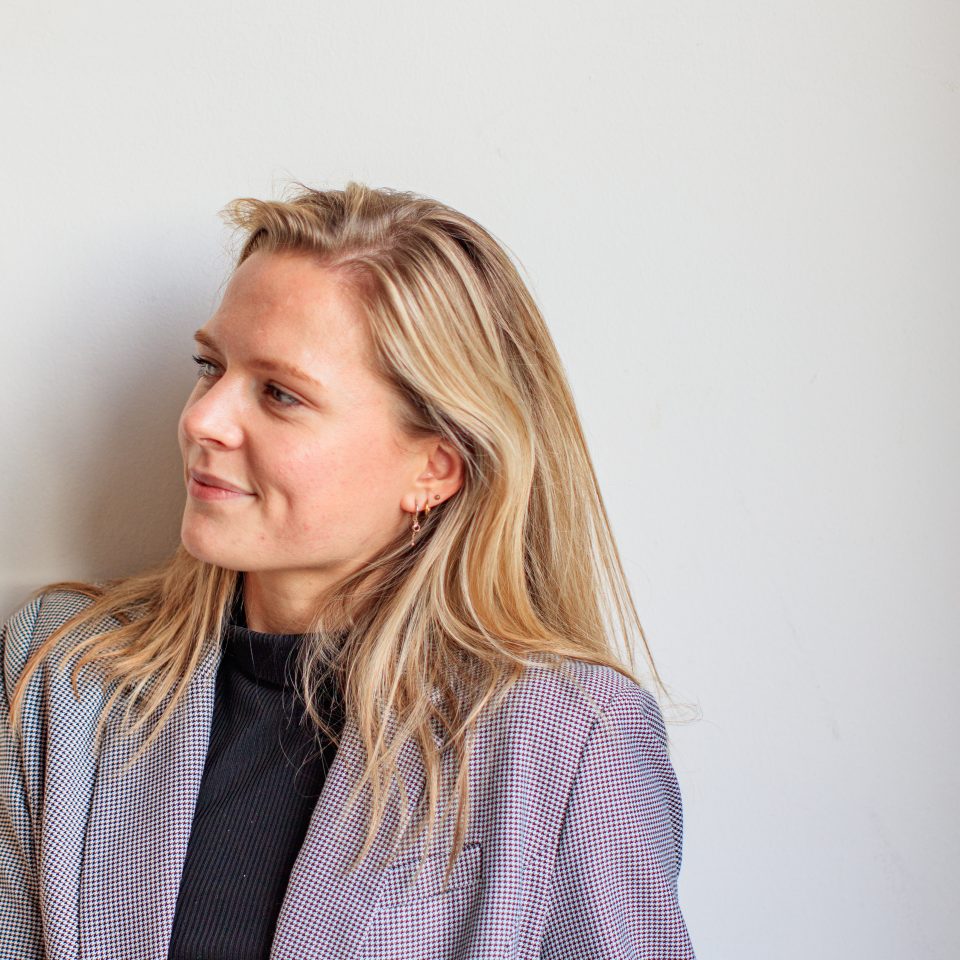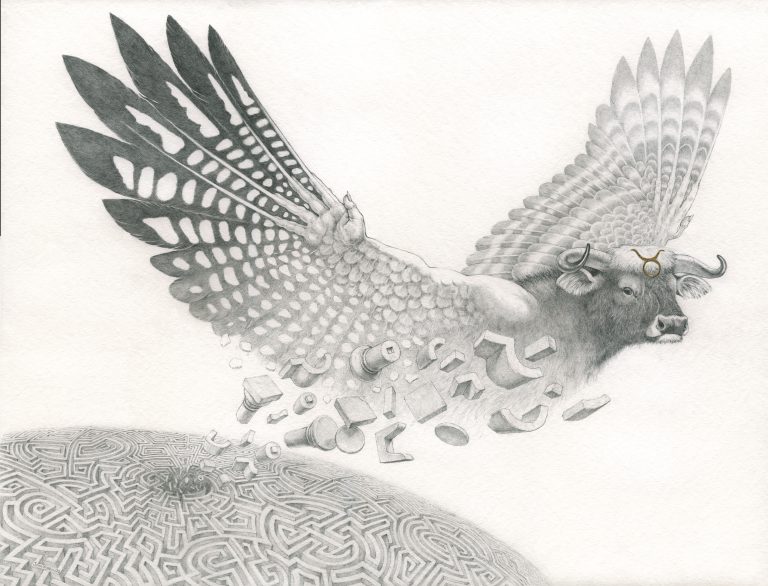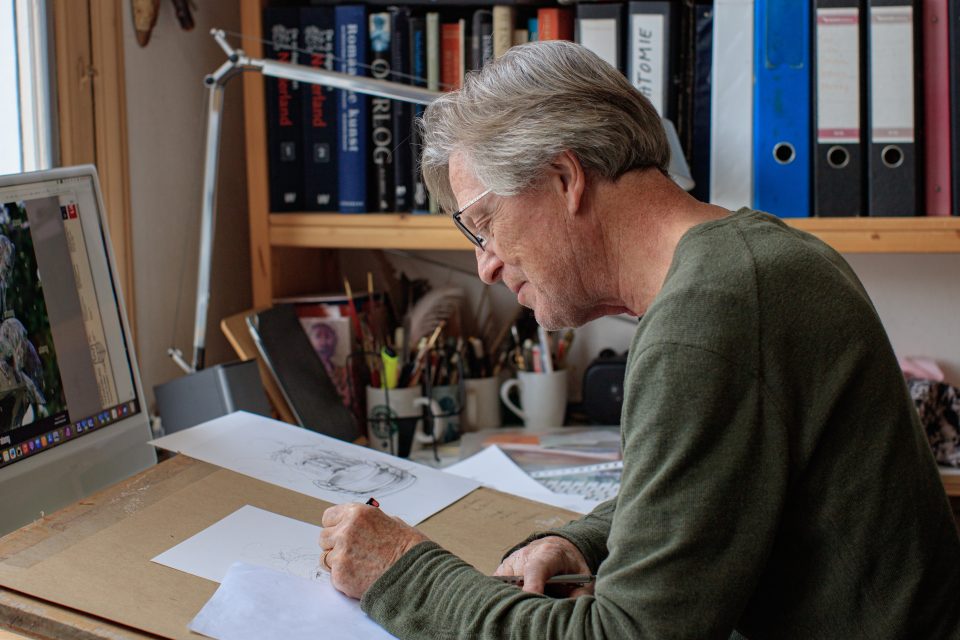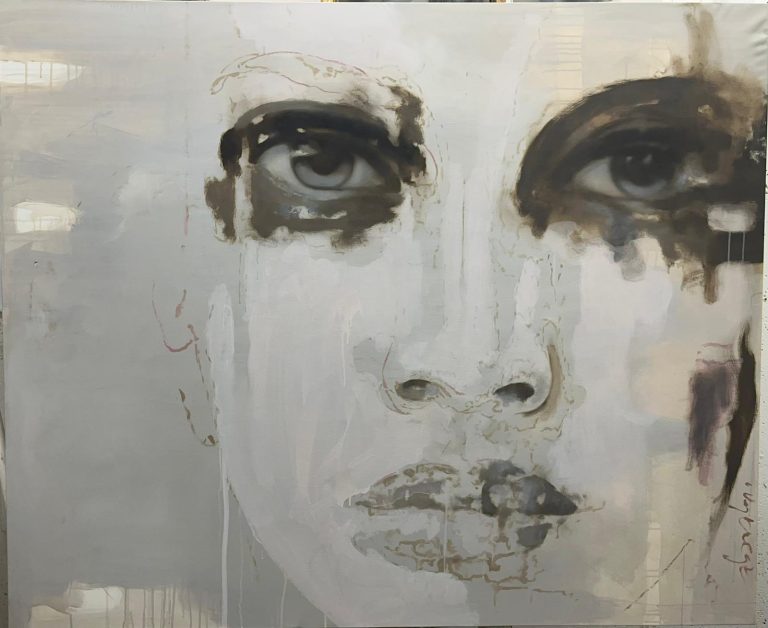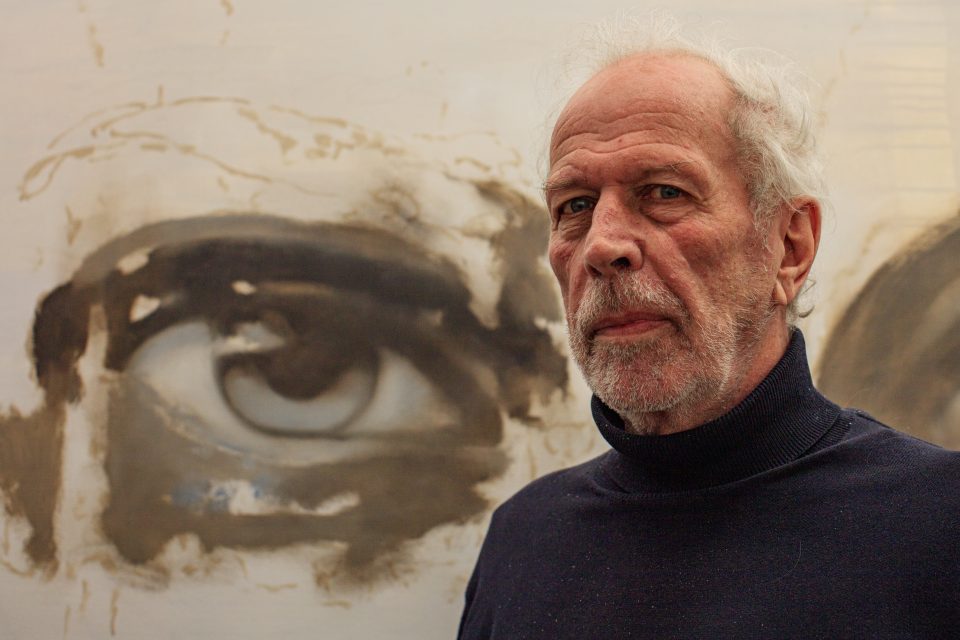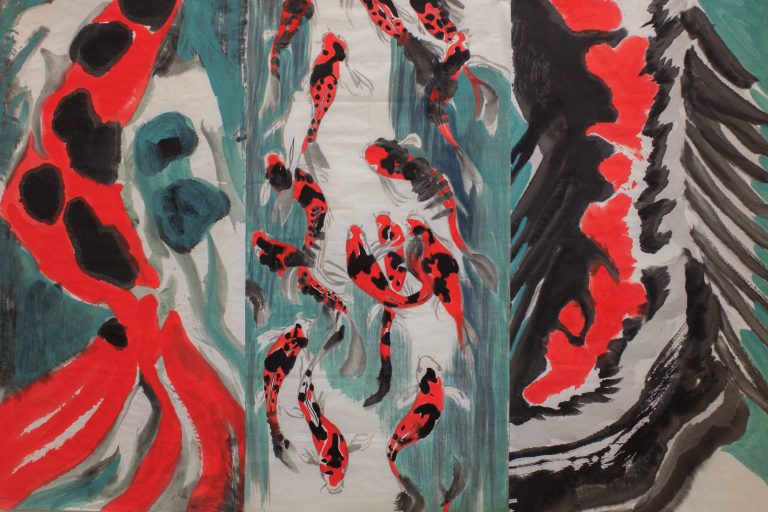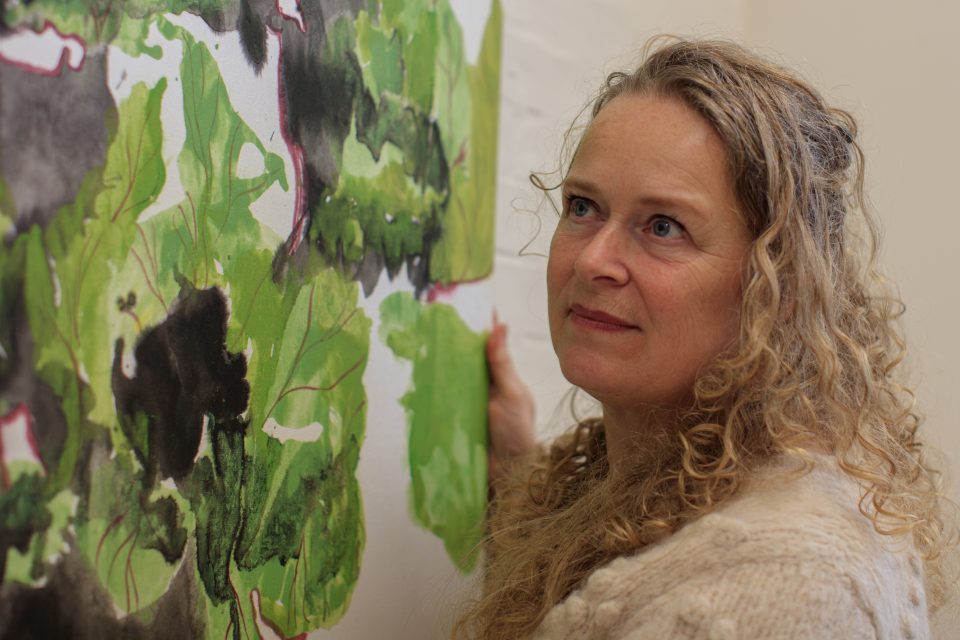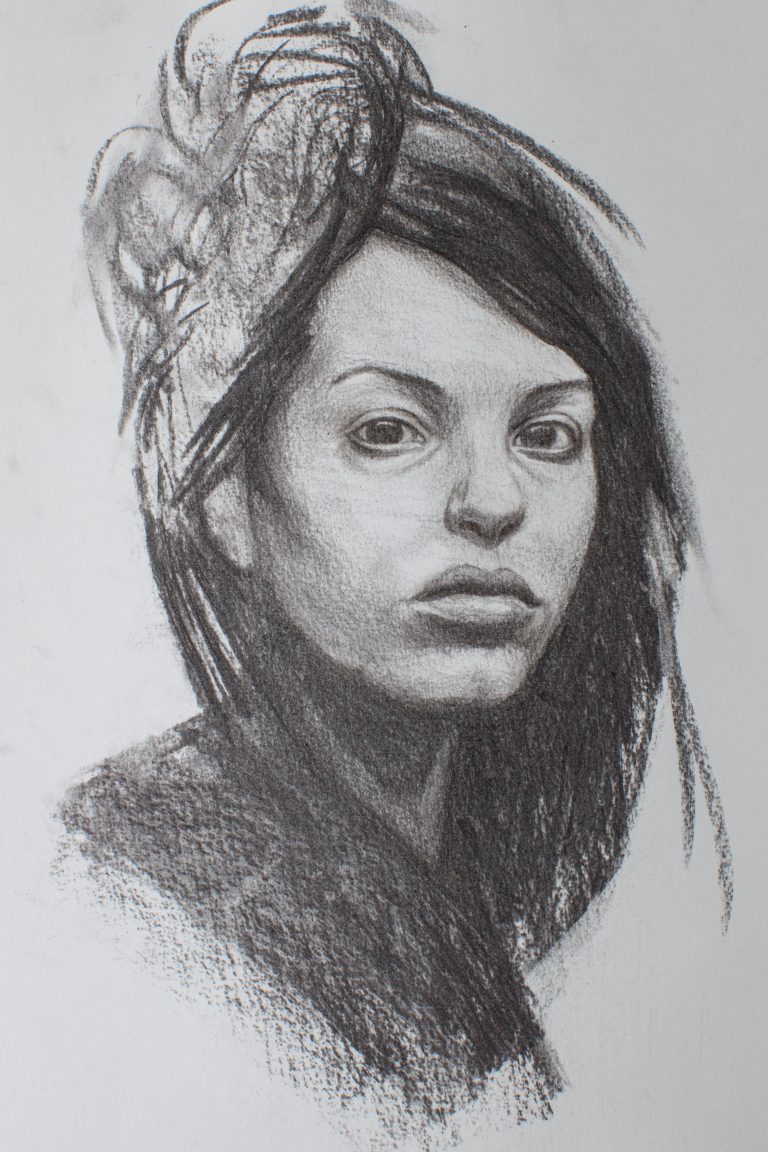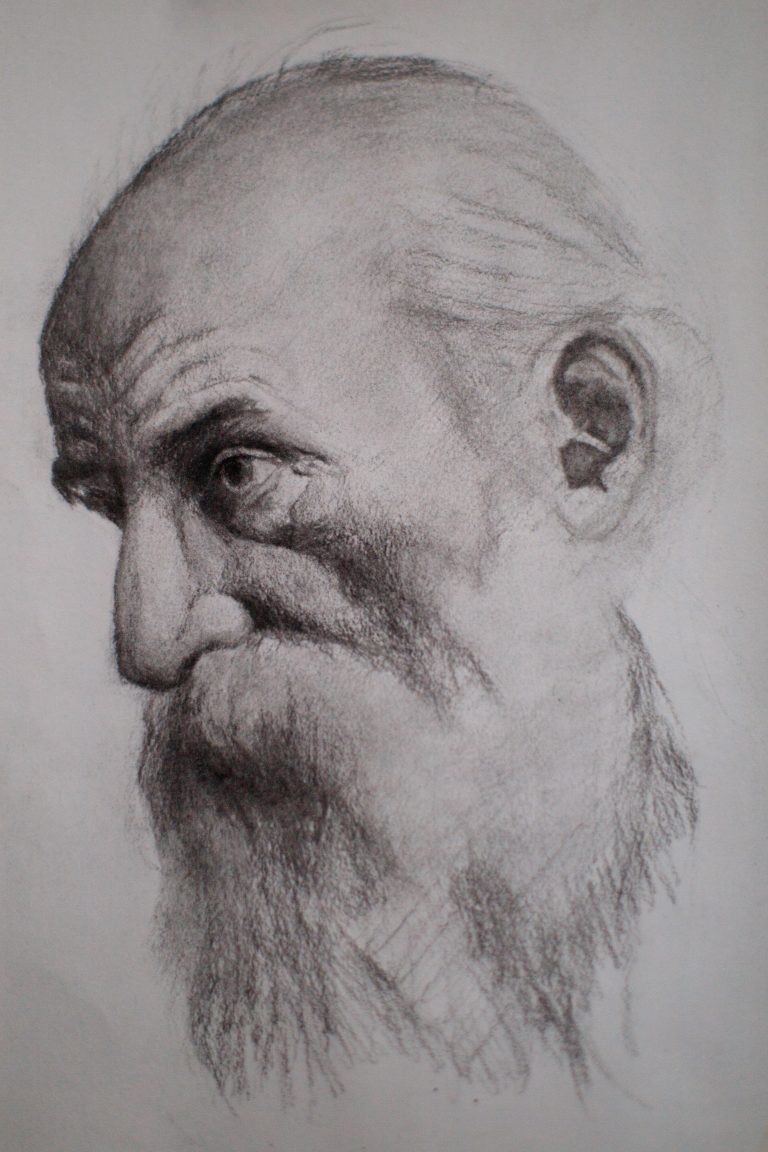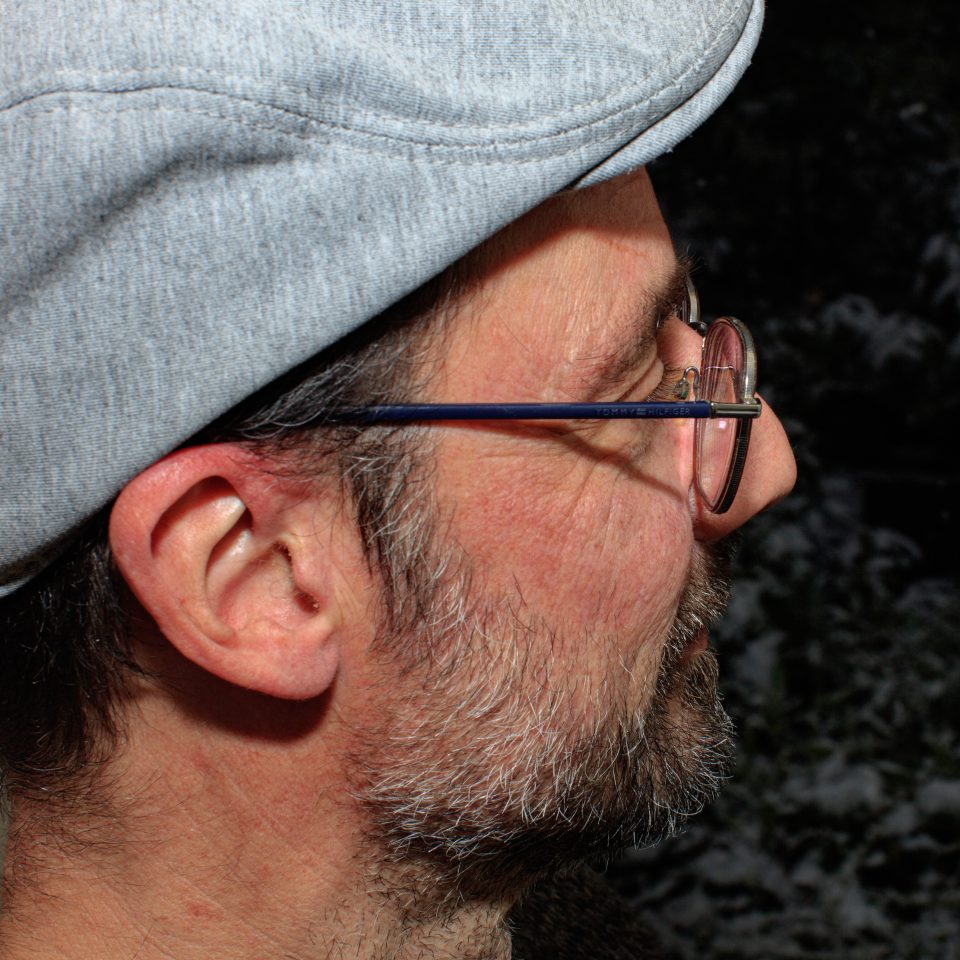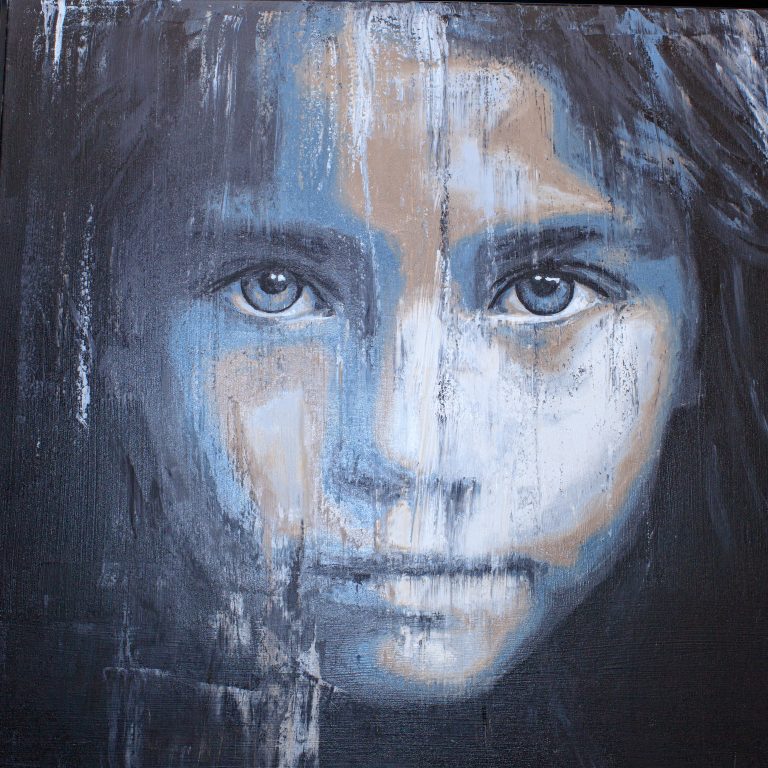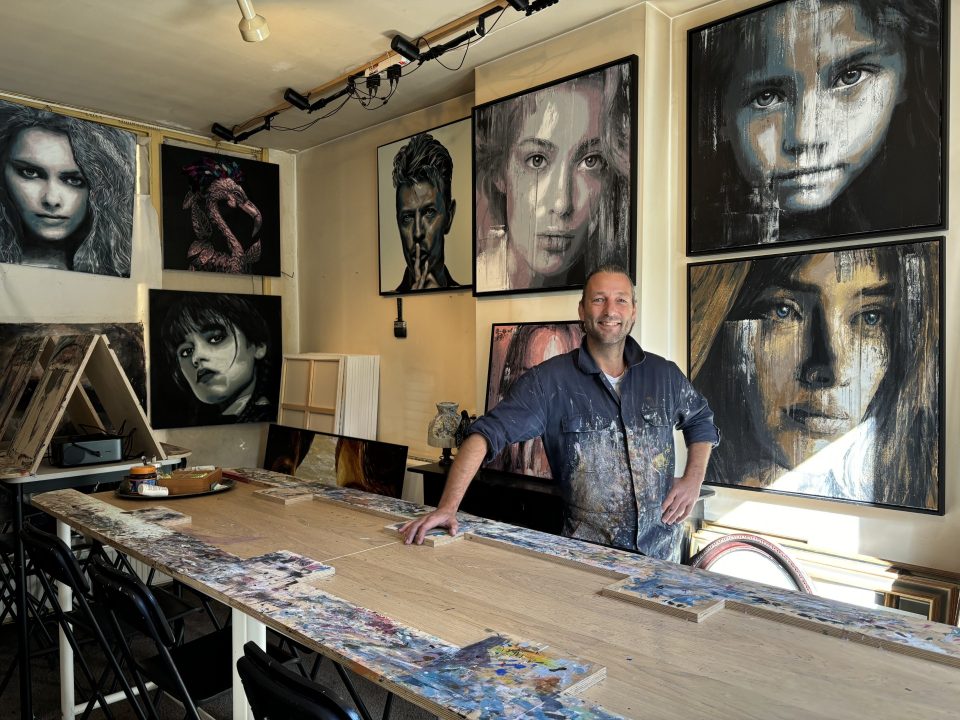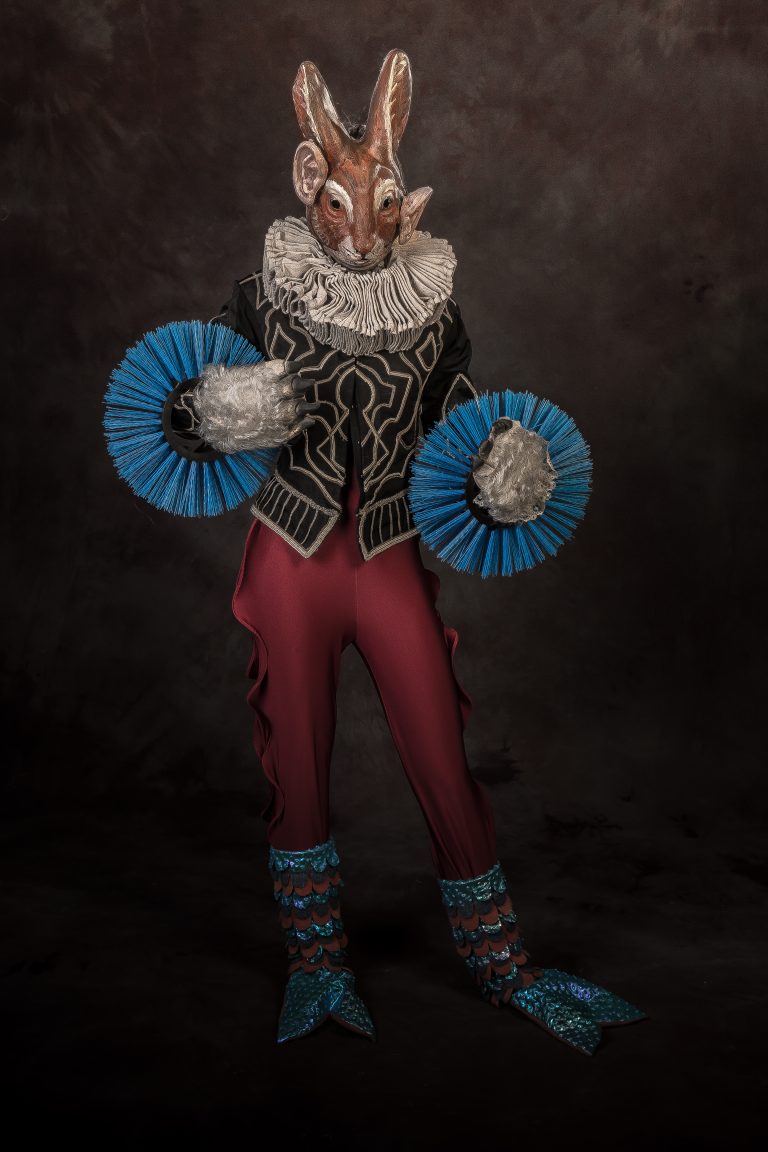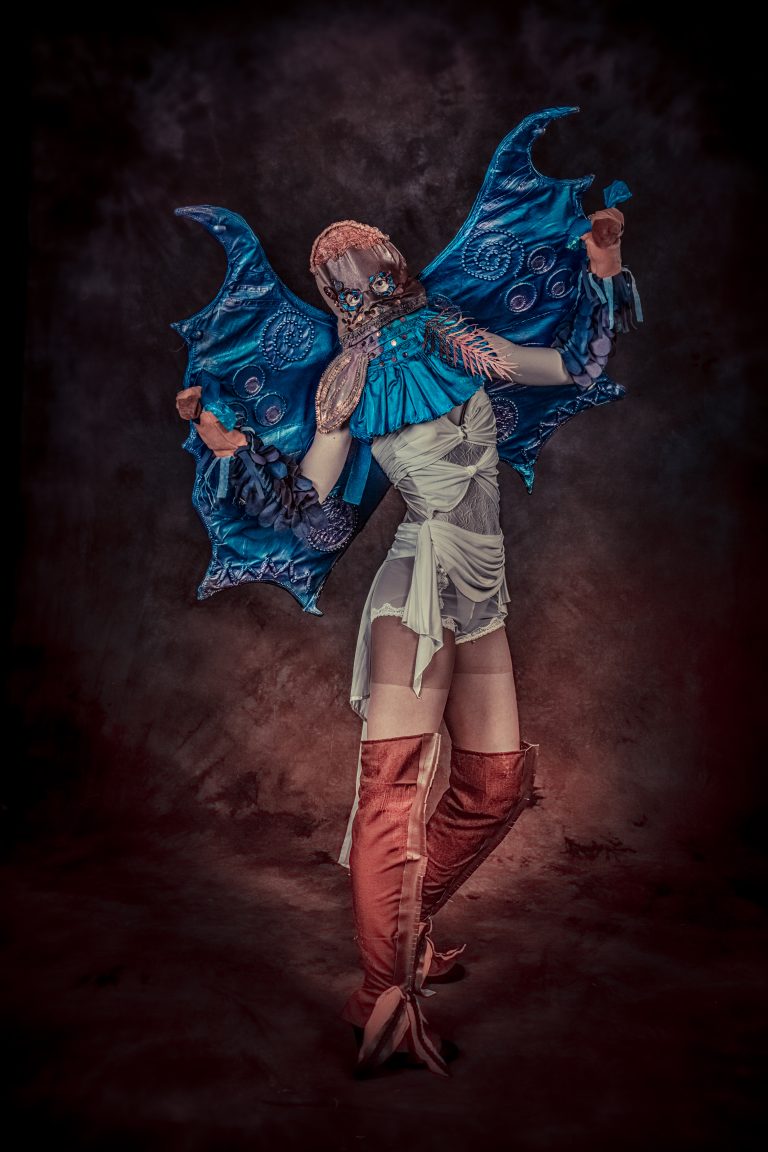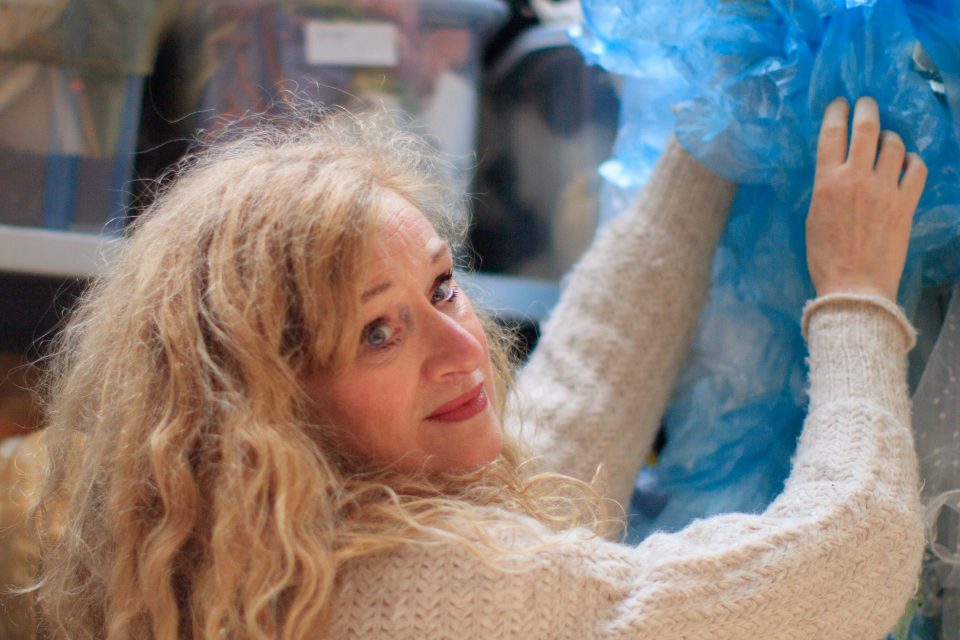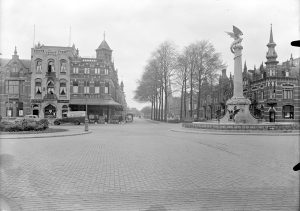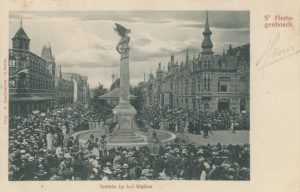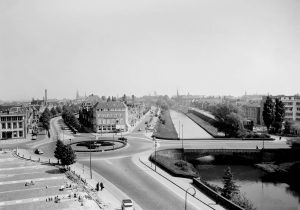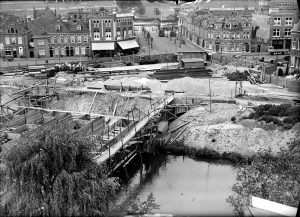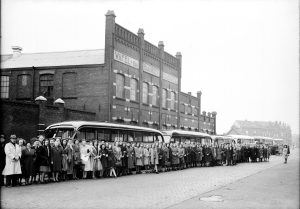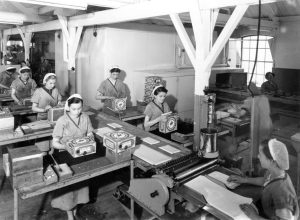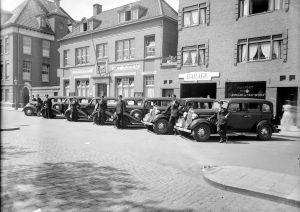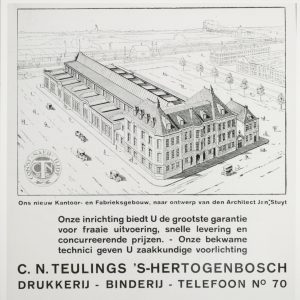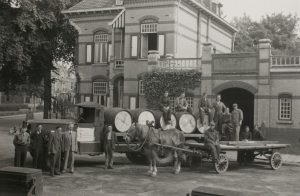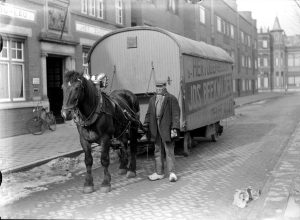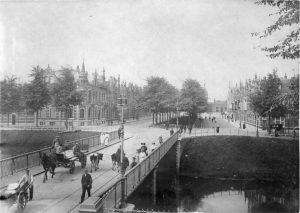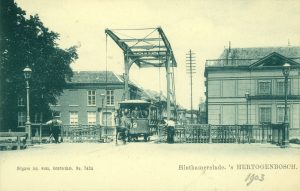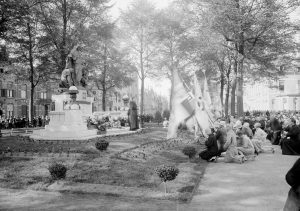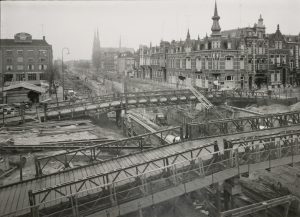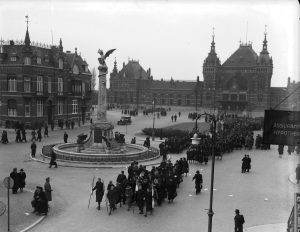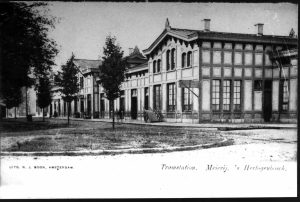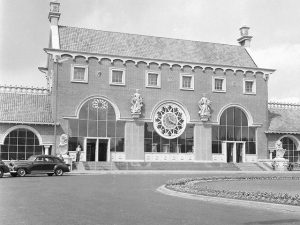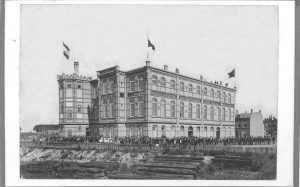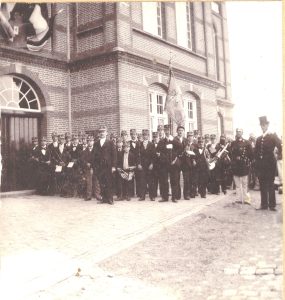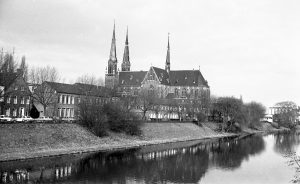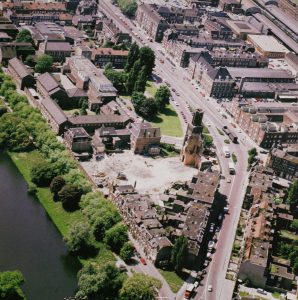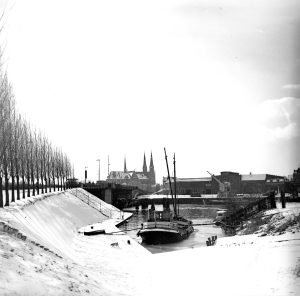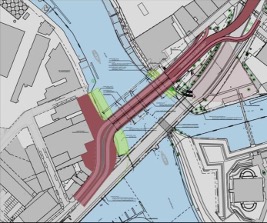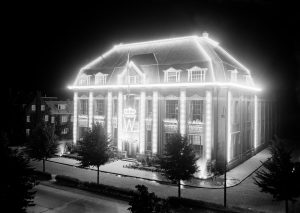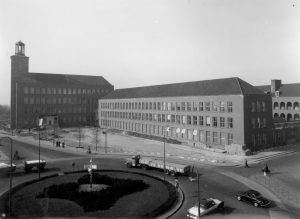Connnected to
’t Zand

The annual neighbourhood calendar aims to connect residents with our neighbourhood. We use this to inform them about our activities, events and newsletters in the coming year. We also highlight the culture and history that make the ‘t Zand neighbourhood unique.
A calendar that is actively used hangs in a prominent place in the home. You see it every day. That is why we spend a lot of time and love on each edition, with great attention to detail.
Our calendar includes not only all national holidays, but also the most important Christian, Jewish and Islamic celebrations. In addition, people can find additional information online every month with the QR codes.
A physical calendar is not for everyone and it does not have to be. That is why the photos, artworks and stories of the “Zandkalender” are also available online.
ZANDKALENDER 2025
For this edition we collaborated with 12 artists who live and/or work in ‘t Zand. They made their artwork available for free for the calendar. People with a physical calendar can detach any image and frame it as a work of art. View the artworks and read the artists’ stories below!
- JANUARIMarianne Van Heeswijk
-
Blushing Owl | 2024 25cm x 31cm x 18cm | Mixed Media
Marianne van Heeswijk (1961) has been working out of the Willem II Factory in ‘t Zand since 2021. She studied at the art academies of Arnhem and Tilburg from 1986 to 1991. Her work is about bringing together stories across generations and cultures, creating a new reality in which everything is equal. Marianne does this through breathing new life into discarded objects.
www.villavanheeswijk.nl - FEBRUARIFrans Vogels
-
Frans Vogels | Pressure 24 | 2024 33cm x 24cm x 13cm | Copper, brass and electricity
Frans Vogels (1957) moved into ‘t Zand in 2000. He studied plastic design at the Stadsacademie Maastricht. Frans draws his inspiration from used copper and brass objects in combination with old industrial objects. He uses recognizable objects and combines them with the materials he collects. With this he creates new objects, in which light and humor play an important role.
www.vogelslicht.com - MARCHCarla Scheltens
-
16 D 22 | 2022 50cm x 65cm | Random Art Graffiti on paper
Carla Scheltens (1950) has lived in ‘t Zand since 1993. She graduated from the Royal Academy of Art and Design in 1991. In the same year she founded Atelier Villa Lila. This studio can be found in Fort Orthen in Den Bosch, and here Carla gives drawing and painting lessons to children and young people. In addition to giving these workshops, Carla works as a Random Art Graffiti artist and has started making picture books.
www.ateliervillalila.nl - APRILArjan van Arendonk
-
Blue for You | 2022 60cm x 60cm | acrylic, coloured silicone and embroidery on printed fabric
Arjan van Arendonk (1957) has been working at the Willem II Factory in ‘t Zand since 1988. He graduated from the Royal Academy in Den Bosch in 1982. Arjan uses printed fabrics as a base for his paintings, which makes his art unique and striking. In this way, he transforms an everyday product into a work of art, which fits in with his vision: art is close by. Arjan draws his inspiration for his work from nature. He mainly works with acrylic paint, silicone and embroidery.
www.arjanvanarendonk.nl - MAYLisetteh
-
To do | 2024 50cm x 80cm x 2cm | (empty) medicine strips
Lisetteh has been working from the Willem II Factory in ‘t Zand since 2007. Lisetteh works with various materials, techniques and themes. In addition, she is involved in the Grafisch Atelier Den Bosch and, together with Myrthe Rootsaert, she curates the art space de Melkfabriek in the Guldenvliesstraat. In her work, Lisetteh offers the option of seeing “things” in a new perspective and reconsidering the open ending.
www.lisetteh.com - JUNEBente van Ruremonde
-
No title | 2023 50cm x 40cm | Acrylic paint on canvas
Bente van Ruremonde (1995) came to ‘t Zand three years ago (2022). She recently picked up her passion for drawing and painting again, with the ambition to make her creative talent a bigger part of her life. Bente is working on her own style by experimenting: learning by doing. By working in this way, she wants to continue to develop her creativity and make this passion more than just a hobby. View Benthe’s profile
- JULYJohn Rabou
-
The Great Escape | 2022 50cm x 65cm | Pencil and gold leaf on paper
John Rabou (1955) has lived in ‘t Zand for 50 years next year. He has specialised in historical and heritage illustrations, striving for the greatest possible historical accuracy. John illustrates for publishers, heritage institutions, archaeological services, museums and theme parks, both nationally and internationally. Since 2014, John has initiated and produced his own book projects in collaboration with various writers.
www.johnrabou.nl - AUGUSTJos van Uijtregt
-
No title | 2024 170cm x 140cm | mixed media on cloth
Jos van Uijtregt (1947) has lived in the ‘t Zand for over 30 years. He makes interesting, dramatic paintings. He often paints women or more androgynous figures. He is mainly inspired by the strange and unusual. He has further developed his sense of the zeitgeist through his work in applied art. He knows how to translate this feeling into his own style that continues to fascinate through the mysterious undertones of his work.
- SEPTEMBERSusan Reijnders
-
The Pleasures of Fish | 2024 137cm x 204cm | ink, watercolor, water and brush on mulberry paper
Susan Reijnders (1968) creates works of art with ink, watercolor and water on mulberry tree paper that depict the vital force of nature. Since 2014 she has been working from the Willem II Factory in ‘t Zand. Her inspiration comes from Eastern ink painting techniques in which she immersed herself both in the Netherlands and during her working stays in China. Her work explores themes such as the cycle of life and death, transience and the deeper phenomena of existence.
www.susanreijnders.com - OCTOBERTwan Kauffman
- NOVEMBERVictor van Loon
-
No title | 2024 90cm x 90cm | acrylic on canvas
Victor van Loon (1980) has lived in ‘t Zand since 2012. In 2021, he started giving workshops in the field of portraits of people and animals. His studio is located above Café ‘t Bonte Palet. Victor also paints on commission and enjoys making his own work. His starting point is mainly to bring art closer to the people.
www.ateliervivalo.nl - DECEMBERMieke Kortman
-
Jeroen Bosch Beesten | 2015 Butterfly costume size 36/38 and Hare costume size 48/59 | Textiles and Pretex
Mieke Kortman (1968) has lived in ‘t Zand since 1997. She is the owner of a costume design and costume rental company “The Wishing Well”. Mieke makes dream costumes for events, companies and individuals. With her knowledge and creativity she always creates a beautiful and surprising result. She has bundled her work and experience in an innovative fashion book “Figure It Out Style Advisor”. Her goal with this is to inspire women to style the best clothing version of themselves.
ZANDKALENDER 2024
Our first calendar was filled with historical photos of the ‘t Zand neighbourhood. Most come from the image archive of Erfgoed ‘s-Hertogenbosch. In our monthly newsletter we wrote background stories for each photo for a year. View all photos and discover all the “Zandkalender” stories below!
- JANUARIStationsplein 1938
-
This picture was taken on the 13th of April 1938. On the left of the photo, we see Hotel Du Commerce, to the left of it a hairdresser and cigar shop Martens. These buildings were unfortunately destroyed during World War II. Nowadays, two employment agencies are located on this spot, with apartments above them, in a modern building from 1998.
The Stationtunnel, also known as the Drakentunnel, was built in 1960, on the site of the trees in the Koninginnenlaan. The old fashioned van in front of the hotel was owned by the launderette De Spuistroom. This launderette was located in the Molenstraat, across from restaurant Van Puffelen, which still exists to this day.
However, the reason we chose the picture above is of course the dragon fountain!
The dragon fountain was officially brought into use on the 19th of July 1903. This is exactly 120 years ago this year! Post cards were made of the picture of the opening, which were scanned in by Erfgoed (Heritage) ‘s-Hertogenbosch, and which can be seen on the image above.
The opening of the dragon fountain was executed by Mayor Van der Does de Willebois, after which a street in our neighbourhood was named. He was the Mayor of ‘s-Hertogenbosch from 1885 up until 1917. This means he was also the Mayor when our neighborhood, ‘t Zand, was built, between 1890 and 1915.
- FEBRUARIWillemsplein 1950 -1960
-
This picture was taken sometime between 1950 and 1960, but the exact year is unknown. The picture was taken out of the PNEM tower (the provincial North-Brabant electrical society), where Essent is now located.
On the picture, we can see the roundabout on Willemsplein, the Willemsbrug, and the Van der Does de Willeboissingel. Between the Koningsweg and the Willeboissingel, we can see cafetaria Rotonde. Nowadays, café BUURT is located here.
On the left side of the picture, on the corner of the Koningsweg, we can see the Protestant Military Home. This home was built after World War II. You can see what originally stood in that spot on the picture below. Nowadays, a large office building is located here. Up until recently, this office building was rented out by Brand Loyalty and Stichd.
On the horizon on the left, we can see the chimney of the Sint-Jan milk factory. This factory was built in 1907, it processed and distributed milk throughout the city up until the end of the fifties. Nowadays, multiple studios and Kunstruimte de Melkfabriek are located in the building, named after the original factory.
On the 12th of July 1938, this picture was taken of the same place, but from a different angle. The Willemsbrug from the last picture is being built, as a replacement for the wooden bridge that was here before. The handrails of the bridge were made from small tree trunks and sticks, which is why this bridge received its nickname: Knuppeltjesbrug.
The building with the white awnings in the middle of the picture is Hotel Wilhelmina, which originates from 1902. On the left side of the hotel we can see part of the working class neighbourhood, which had the nickname Lombok. The people living here had the nickname Lombokkers, and the rest of the residents of ‘t Zand were called Zandhazen.
The wide street with the hotel on the left side and the houses and companies on the right side, is the Willemstraat. Nowadays you can walk this route between two large office buildings towards the Paleisbrug.
During World War II, this part of ’t Zand was badly damaged. After the war, most of the wreckages were taken down and in its place, the PNEM-office and tower was built. The Lombok neighbourhood disappeared, however you can read the story about this neighbourhood on the website of Bossche Encyclopedie.
- MARCHOriginal Verkade factory 1948
-
This picture was taken on the 20th of March 1948. Here, we see the Verkade factory with its staff, as they were about to leave for their staff outing to Carré in Amsterdam. All the way on the left side, in the white raincoat, is the head of the company standing next to his wife (third to the left). The staff consisted of mostly (young) women.
The factory on the picture was built in 1904 and was originally called the Bossche Wafel- en Banketfabriek van Verhagen en Van Oorschot. In 1929, the factory was bought by Ericus Gerhardus Verkade, a bread and rusk baker from Zaandam. This is how the Verkade factory got its name.
This picture was taken on the 8th of June 1951, in the packaging department of the Verkade factory. Just like in the first picture, we see plenty of young women. At the time, many girls from ’s-Hertogenbosch started working at this factory after finishing domestic science school. This is where the nickname “de Meisjes van Verkade” comes from.
In 1984, two new factory halls were added to the old production halls. These are the buildings you can see today at the Boschdijkstraat.
When production moved to the central location in Zaanstad in 1993, the Bossche Koekjesbakkerij closed. After that, the building stood vacant for years. It wasn’t until 2002 that work began to repurpose the old factory into a new cultural center. In 2004, the Verkadefabriek reopened its doors. Over the years, the building has undergone many changes and renovations.
On the website of the Verkadefabriek, a more in depth version of this history can be found.
- APRILEmmaplein 1936
-
This picture was taken at Emmaplein on the 19th of May 1936. It shows taxis and drivers from the Touringcar- en Taxibedrijf Firma van de Rijdt. This company and their garage was located in the building on the right hand side of the picture.
In the center, we see Fotopers Bureau het Zuiden, founded in 1927. They produced many photos for the daily and weekly Catholic newspapers up until the late 1960s. Thanks to this press agency, there is a lot of high-quality photographic material of our neighbourhood and city. Half of the photos in our calendar were taken by their photographers.
Both buildings were destroyed during World War II and were not rebuilt. Today, the Emma Staete office building stands in its place.
The building on the far left of the picture is Drukkerij en Binderij Teulings.
This picture was taken in 1915 of an advertisement by an unknown photographer. The image shows the office and factory building of Drukkerij en Binderij Teulings.
The front of the building served as the office, while large halls at the back housed the presses that printed the newspapers. At the time, the newspaper was called Het Noordbrabants Dagblad – Het Huisgezin. In 1959, it was renamed to its current name: Brabants Dagblad.
Newspaper printing continued here up until 1973, after which production was moved to the city of Best. The halls were demolished, and in 1977 the office building was sold. Fortunately, it was not torn down and was declared a historical monument.
After major renovations in 2003, the building was repurposed. Nowadays,
housing association Zayaz rents out social housing, and businesses are located on the ground floor. The building was given a new name, De Bindery, which refers to its original function. - MAYCapucijnenlaan 1946
-
This picture was taken on the 7th of June 1946, at the corner of Julianaplein and Capucijnenlaan. It shows the employees of Wijnhandel G. Verlinden & Zonen. The truck on the left belongs to Expeditie- en meubeltransportbedrijf Jos Beekwilder en Zonen, a shipping and furniture transport company. Both were well-known businesses in ’s-Hertogenbosch at the time. Below, we provide a brief description.
Wijnhandel Verlinden was founded in 1885 by Gérard Verlinden. The wine cellars of this family business were located at Julianaplein from 1907 to 1961.
In 2018, Verlinden merged with Verbunt Wijnkopers, which was established in 1884 in Tilburg. Since then, the two family businesses operated under the name Verbunt Verlinden. The company’s website offers a wonderful overview of the history of the Wijnhandel Verlinden, including how the business survived World War II.
This picture was taken on the 12th of March 1942, at Emmaplein. On the left, we see the office of Fotopersbureau Het Zuiden. In the background on the right side, we see the small tower of Emmaplein 24 A, built in 1914. Today, this location houses the coffeeshop, The Grass Company.
The man with the horse and moving wagon worked for the transport company Transportbedrijf Jos Beekwilder en Zonen. This company was founded in 1910 after the purchase of a stable with a horse and cart on the Korenbrugstraat in the city center.
The business expanded throughout the city with multiple locations. In addition to horse-drawn carts, Beekwilder en Zonen also used trucks at that time. By the time the photo at Wijnhandel Verlinden was taken in June 1946, the company had 17 trucks. In 1953, the transport company was sold to BTO from the city of Bergen op Zoom.
The website of Bossche Encyclopedie provides more information about the history of the Beekwilder family and the company.
- JUNEWilheminabrug around 1920
-
This photo was taken around 1920. It shows the Stationsbrug and Stationsweg. In the background, we can see a small section of the Central Station, built in 1896.
The Stationsbrug was constructed in 1875 and was the first of three bridges built at the same location. The first bridge was replaced in 1923 by a wider stone bridge, which was destroyed in 1944 during World War II. The third bridge, built in 1954, is the one we know today. This new bridge was also given a new name, the Wilhelminabrug.
When this photo was taken, all goods were still transported by handcarts and horse-drawn wagons, as cars did not exist. In the middle of the bridge, a man can be seen walking with his cow. On the right, under the trees along Havensingel, there is a carriage.
The bridge also had two tracks, which were used by the horse-drawn tram.
This picture from 1903 shows the Hinthamerbrug. In the image, we see horse tram number 39, which departed from Hinthamereinde. This tram traveled via the Market and the Stationsbrug to the Central Station and back.
In our city, horse trams operated along several routes for nearly 50 years, from 1881 to 1929. There was even a connection between ‘s-Hertogenbosch and Vught. With the rise of cars and buses, these trams eventually disappeared. The last ride of the horse tram was celebrated with a festive farewell on the 12th of May 1929, exactly 95 years ago.
On Bob van Boekel’s YouTube channel, you can find an engaging video about the horse tram in our city around 1900. In the video, he takes viewers on a guided tour through the city along the old tram route.
You can watch the video below without advertisements.
- JULYJulianaplein 1929
-
This picture was taken at Julianaplein on the 21st of May 1929. It shows the Sacred Heart statue during a gathering of the Catholic youth movement known as the Eucharistie Kruistocht .
The Sacred Heart statue was unveiled on the 19 th of June 1925, almost a century ago. The statue was commissioned by the Heilig Hart Stichting, which was active in our city during the 1920s. With the arrival of the statue in our neighbourhood, regular Christian celebrations and gatherings were organized.
In 1939, the statue was relocated to Emmaplein due to the construction of the Stationtunnel, also known as the Drakentunnel. It still stands there today.
This picture, taken on the 13th of December 1959, shows Stationsplein during the construction of the Stationtunnel. Two large Bailey bridges were temporarily installed from east to west, allowing people to cross without taking a detour. In the background, the two towers of the impressive Sint-Leonardus church are visible.
The tunnel under Stationsplein was built to facilitate the growing flow of car traffic from north to south and vice versa. It was officially opened to traffic with a festive ceremony on the 30 th of June 1960.
Since the tunnel’s construction, Brugstraat and Koningsweg has become more congested with traffic. In 2007, association Milieudefensie conducted research on the most polluted urban roads in the Netherlands. Of the thirteen most polluted streets in Den Bosch, three were located in our neighbourhood ‘t Zand: Brugstraat, Koningsweg, and Willemsplein.
For comparison, Rotterdam ranked first nationally with 76 polluted urban roads in the same study. In North Brabant, Tilburg ranked first with 18 roads, followed by Breda, and then Den Bosch with thirteen polluted urban roads.
- AUGUSTStation 1940
-
This picture was taken on the 11th of February 1940, at Stationsplein. It shows pilgrims walking out of the Central Station in the background.
The station was designed by architect Eduard Cuypers and opened on the18th of July 1896, after three years of construction. Eduard was the nephew of Pierre Cuypers, the famous architect who also trained him. Pierre designed the Rijksmuseum (1885) and Amsterdam Central Station (1889).
The station was an impressive building, 140 meters long, with multiple (luxurious) waiting rooms for travelers. Above the station, there were apartments for the engineers and the stationmaster.This photo was taken three months before the occupation of the Netherlands during World War II. The station was heavily damaged during the war in 1944.
Our city and neighbourhood ’t Zand has had four stations since 1868. The first station (postcard) was made of wood and was located near Boschveldweg and Kempenlandstraat. When the second station, designed by Eduard Cuypers, was built, the first station was used for some time as a tram station. It was eventually demolished in 1915.
Eduard Cuypers’ station was not rebuilt after World War II. It was eventually demolished and replaced in 1951 by the third station (photo). This station was smaller and more modern but was designed to retain a monumental look. The platform canopies were not demolished and remain in place to this day.
In 1998, the building was replaced by the fourth station, surrounded by offices and restaurants. Due to the increasing number of train passengers, this station will become too small in the future. As a result, plans are currently being explored to expand and make the station more sustainable.
You can read more about the history of the city’s stations on the Erfgoed ’s-Hertogenbosch website.
- SEPTEMBER Cigar factory Goulmy & Baar 1898
-
This photo was taken in 1898 during the festive opening of the new Goulmy & Baar cigar factory in ’t Zand, now known as the Willem II factory.
Bossche resident Eugène Goulmy founded the Nederlandsche Sigarenfabriek Goulmy & Baar in 1890 together with German entrepreneur Rudolf Baar. In 1897, construction began on a new factory in ’t Zand, which opened a year later. The factory was expanded in 1907, employing 500 cigar makers at its peak, making it the largest cigar factory in the Netherlands.
The partnership between Goulmy & Baar ended in 1929, and in 1936, the factory was taken over by cigar maker Willem II. It continued to produce cigars until 1951, after which the building fell into disrepair. The municipality purchased the factory in 1979 and still owns it today.
At Boschdijkstraat, you can still see the name “Willem II Sigarenfabriek” on the facade, while the name Eugène Goulmy & Baar can also be found on the walls of the Boschveldweg side.
The website Fabriekofiel offers an extensive history and stunning photos of this historic factory in our neighbourhood.
Picture: www.goulmyenbaar.nl
In the picture, we see the Muziekkorps der Nederlandsche Sigarenfabrieken Eugène Goulmy en Rudolf Baar, also known as Harmonie Goulmy & Baar. The harmonie was established in 1894 to boost the morale of the factory workers, with most members also being employees of the factory. This photo was taken during the opening of the new factory in 1898.
When the Goulmy & Baar cigar factory was dissolved, the music association’s name was changed to Koninklijke Harmonie ‘s-Hertogenbosch. In 1987, the factory was repurposed as the Willem II Concert Hall, now known as Poppodium Willem Twee. The building also houses rehearsal spaces, studios, and small businesses.
Nowadays, Koninklijke Harmonie ‘s-Hertogenbosch remains connected to the factory. The orchestra practices in the building’s basement, making the harmonie a living piece of ’t Zand’s history.
The Goulmy and Baar website offers many more stories, photos, and historical documents. It was created and is maintained by Paul Goulmy, the great-grandson of Eugène Goulmy.
- OCTOBERSint Leonardus church
-
This photo was taken in 1925 from the Buitenhaven across the Dommel River. We can see the spires of the Sint Leonardus church and, in the background on the right, the silos of the Koudijs compound feed factory.
The church was built in 1905 in the neo-Gothic style and featured beautiful stained-glass windows. It was named after the French Saint Leonardus from the year 500. Leonardus was known for his protection of prisoners and his assistance to people with disabilities.
For more information and photos of the church, visit the Bossche Encyclopedie website.
During World War II, the church was heavily damaged. Although it was restored afterwards, the church was demolished in 1973 due to declining attendance (photo).
In its place, Dommelstate on the Havensingel and an office building on the Emmaplein were constructed. The office building became infamous as ‘the ugliest building in ’s-Hertogenbosch’. From 1980 to 2012, it housed the Brabants Dagblad newspaper. In 2017, the building was converted into 58 apartments with office spaces on the ground floor.
- NOVEMBERDiezebrug 1955
-
This picture was taken in 1955 from the Werfpad. On the left, we see the Diezebrug, and in the background, the Sint Leonardus church at Emmaplein is visible. On the right, we can see the IJzergieterij at Buitendijk, with a crane in front of it.
The Diezebrug was built in 1939 and served as an important connection over the Dieze River. It was a drawbridge with a 25-meter wide clearance for ships.
During World War II, this bridge played a crucial role. On the 24 th of October 1944, during the liberation of ’s-Hertogenbosch, German troops blew up the bridge with explosives to slow down the advance of the British 53rd (Welsh) Division. The damage was significant, and the British forces had to take an alternative route to liberate our neighbourhood and the city.
You can find more information about the history of the bridge on the Bossche Encyclopedie website.
After the war, the Diezebrug was restored, but the bascule function (the ability to open the bridge) was deactivated. As a result, it became a fixed bridge, and high ships could no longer pass underneath. The bridge still connects the northern bank of the Dieze with the southern bank of ‘t Zand.
In early 2026, construction will begin on a new, lower Diezebrug. It will be located 50 meters to the west, towards the Tramkade, as shown in the image above. The old bridge will be demolished, but only once the new bridge is completed.
- DECEMBERPNEM office, Koningsweg 1940
-
This picture was taken on the 23rd of August 1948, on the Koningsweg. In the photo, we see the headquarters of the Provincial North Brabant Electricity Company (PNEM). The building is illuminated for the 50th anniversary of Queen Wilhelmina’s reign and the royal succession in 1948.
The building dates back to 1921 and, in addition to being used as an office, also housed a measuring laboratory, garage, workshop, and warehouse. It was designed in the so-called Berlagian style.
It has distinctive architecture with symmetrical facades made of brick and natural stone, and slate roofing. Inside, several original elements have been preserved, such as the stone staircases and art-deco architectural details.
Today, the building is known as Koningshuis and houses offices and apartments. Since 2001, it has been registered as a national monument, meaning that both the exterior and interior are protected.
On the Bossche Encyclopedie website, you can find more information about this building.
This picture was taken on the 30 th of March 1956, at the Willemsplein. In the photo, you can see the new headquarters of the PNEM, diagonally across from the old office on the Koningsweg.
The building consists of two large monumental complexes connected by a linking structure. The buildings have a robust appearance with notable elements such as round stair towers and a prominent clock tower.
The PNEM was government-owned. After a series of mergers, the energy company was sold to a commercial party in 1997, the energy supplier Essent. This company is still based in our neighbourhood at the same location.
The new headquarters was built between 1952 and 1956 on the site where the neighbourhood of Lombok once stood. Bob van Boekel’s YouTube channel features a wonderful video about Lombok and the construction of the new office, filled with beautiful old photos. You can watch the video below without advertisements.
